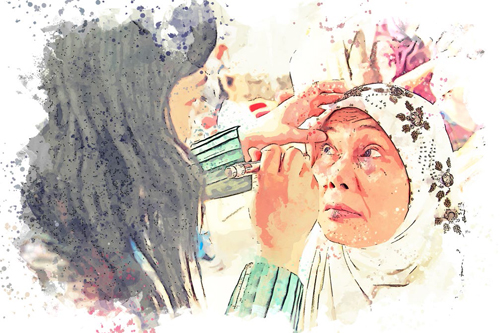Bridging the gender and health divide
In many countries, women bear the brunt of inequitable health systems. Dr Tedros Adhanom Ghebreyesus, director-general, and Dr Senait Fisseha, special envoy and chief advisor to the director-general, World Health Organization, say gender-responsive health systems are essential to achieving universal health coverage and the Sustainable Development Goals
The World Health Organization turned 70 last year. A look back at the black and white photos from WHO’s early days highlights a troubling feature: a disturbing absence of women in senior roles. Most of the photos depict men in smart suits, some of whom are smoking at their desks.
The pipes and cigars are long gone. Unfortunately, it has taken much longer to give women their rightful place around the decision-making table.
We are proud that women are now equally represented in WHO’s senior management, and we are committed to working towards gender equality at all levels of the organisation.
For WHO, this is not just window dressing or ticking a box. It is the heart of our mission.
Equity is central to universal health coverage: the idea that everyone in a population has equal access to services that are affordable, effective and gender-sensitive.
In the Sustainable Development Goals, all countries have committed to achieving UHC by 2030. The reality is that we are a long way from that target.
At least half the world’s population lacks access to essential health services, and every year almost 100 million people are pushed into extreme poverty by out-of-pocket health costs.
In many countries, women bear the brunt of these inequalities.
Because of their reproductive health needs and longer life expectancy, women face unique challenges that can be amplified by inequality.
Globally, about 40% of women of reproductive age have not had their demand for family planning satisfied, or miss out on WHO’s recommended four antenatal care visits when pregnant. Because girls are typically less physically active than boys in childhood, they are at higher risk of obesity, a gender gap that persists throughout life. Depression, mood and anxiety disorders are more common and persistent in women, and are associated with women’s traditional gender roles.
Barriers to health care
Women can also face barriers in accessing care, including lack of autonomy, violence, limited health literacy, limited access to household resources, restrictive laws and cultural mores that limit mobility and physical activity, and needing permission from their husbands, brothers or even sons to seek care.
These disadvantages are amplified for women in poor rural households, who have less access to services than in poor urban households. Lack of social health protection schemes such as maternity or reproductive health benefits creates additional health risks and financial barriers for women. Women in the informal sector are particularly disadvantaged as they are excluded from employer-based insurance schemes.
Conversely, although men enjoy more access to resources, power and position, they also face unique health challenges. They are more likely to take risks with their health and are less willing to seek and use health care.
Men have a shorter life expectancy than women in every country, and are more likely to die prematurely from smoking, alcohol use and other behaviours with significant health risks. More men die from suicide, and men have a much higher burden of tuberculosis and poorer treatment outcomes because of delayed detection and low treatment completion rates.
All of this can result in a greater burden of care for women and increase the risk of impoverishment, especially where households are not protected by social protection schemes.
The gender link
But women’s and men’s health cannot be addressed in isolation – they are inextricably linked.
Unless explicit attention is paid to gender inequalities, health systems can fail to improve gender equality and may even worsen it since some groups have greater health needs and lower financial resources.
That applies within the health system itself. Gender pay gaps, lack of formal employment, violence and lack of representation in leadership and decision-making in the health workforce undermine its ability to deliver the care people deserve, particularly as 70% of the global health workforce is female.
To truly achieve universal health coverage, countries need disaggregated data to understand who is being left behind and why.
But analysing data is just the first step. Prioritising and implementing a set of actions to address gender and other structural barriers is critical. Social and financial protection schemes need to consider their implications within households, communities and government institutions, taking into account gender power relations and resource allocations.
To date, only a handful of countries have taken a systems approach to addressing gender as we describe. We have aligned ourselves with a newly formed gender and UHC alliance, with 85 members who are forging new ground.
G7 leaders can play their part by ensuring the High-Level Meeting on Universal Health Coverage at the United Nations General Assembly in September produces a resolution with a strong emphasis on gender equality.
Co-authored by Senait Fisseha
Special envoy and chief advisor to the director-general, World Health Organization
Senait Fisseha is a reproductive endocrinologist at the University of Michigan and director of international programmes at the Susan Buffet Foundation. Professor Fisseha has a dual degree in medicine and law and is known for her work as an advocate for global reproductive health, rights and gender equality. She is the founder of the Center for International Reproductive Health Training at the University of Michigan. She serves as a special envoy and chief advisor to the director-general of the World Health Organization.
Follow Senait on Twitter.












